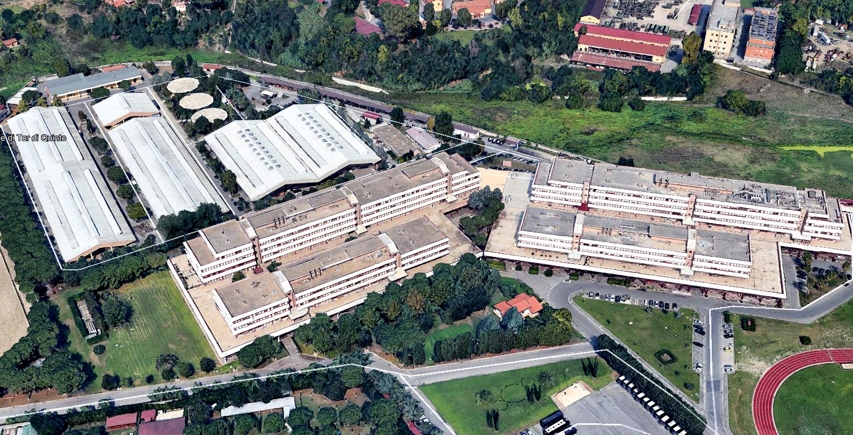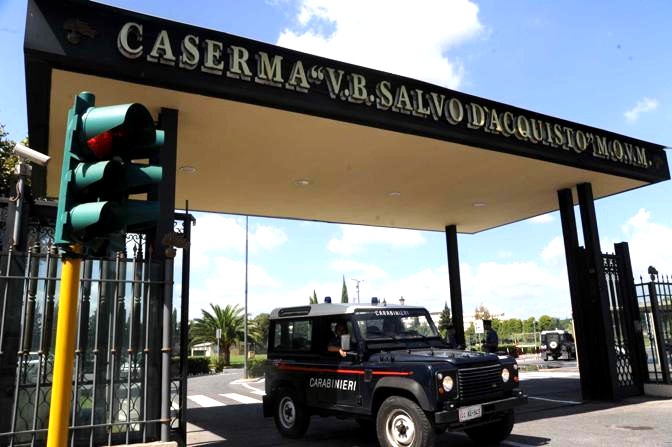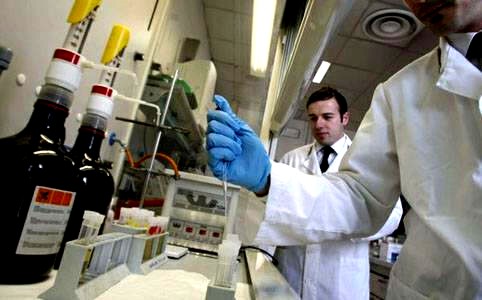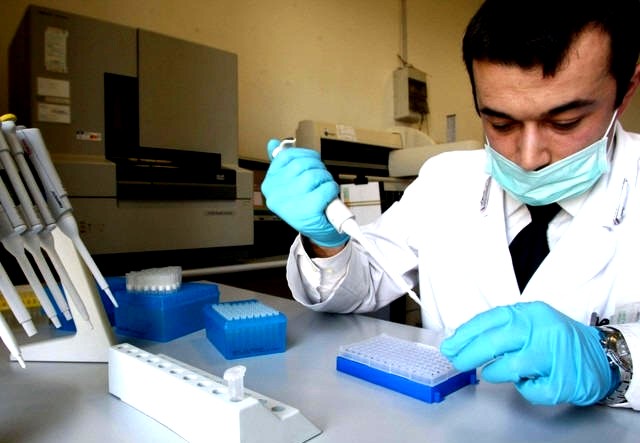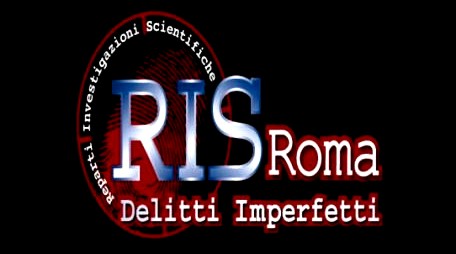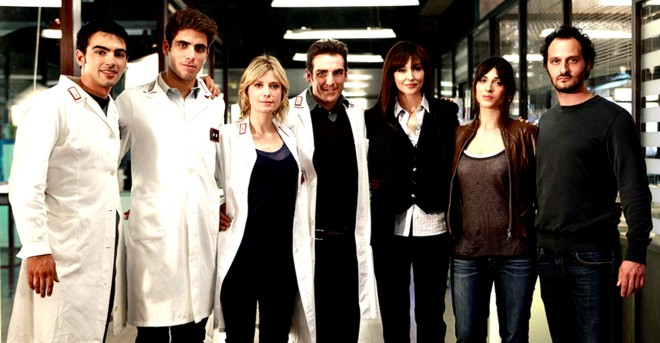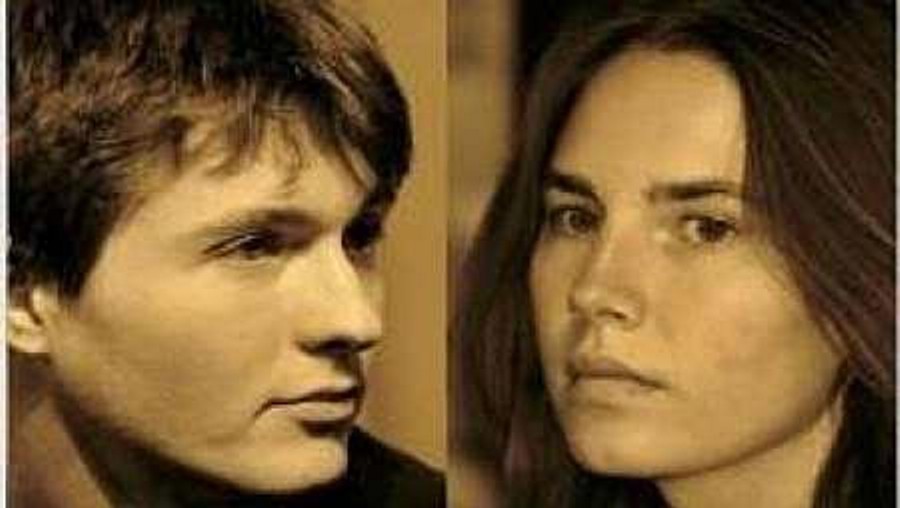
Category: Evidence & Witnesses
Tuesday, October 22, 2013
The Meredith Case Wiki: A Highly Objective Summation Of The Case From Original Docs And Transcripts
Posted by James Raper
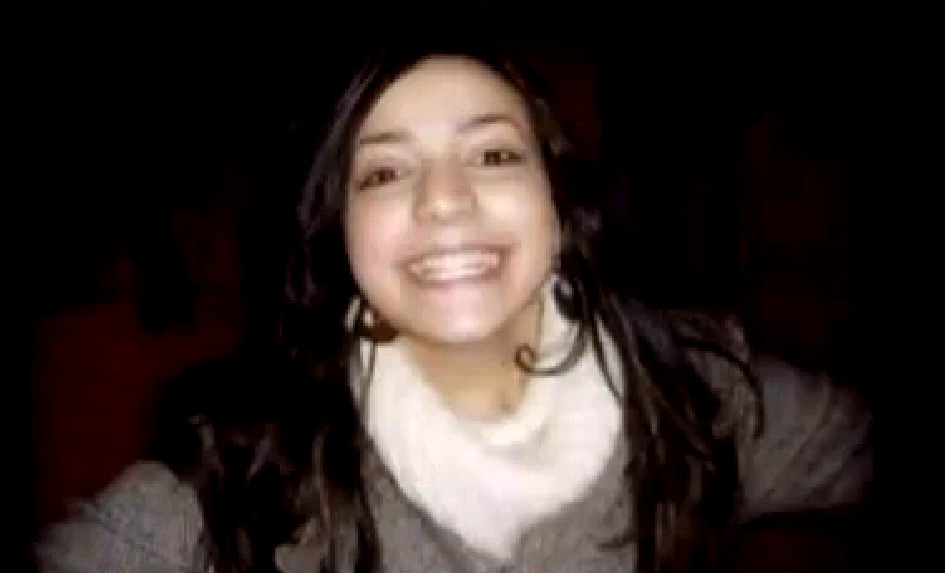
Some of our readers may not have noticed the new link to The Meredith Case Wiki to be found in the left hand column of this front page. I had not noticed it myself until recently.
This is an important link to a new website that is now a vital additional resource for those interested in understanding this case.
The website - The Murder of Meredith Kercher - is run by Edward McCall, with the assistance of other contributors, and TJMK is pleased to acknowledge and promote its distinctive and concise approach to presenting the facts of the case.
The site is modelled on the format of a page from the Wikipedia free encyclopedia. As with a Wiki page it is easily navigable. The data presented under the various headings is the consequence of much research but it still remains a work in progress. Wherever possible the material used is referenced in footnotes.
It starts on the Main page with a Mission Statement and an Introduction to the case. It then considers the evidence and has a good section entitled Myths Debunked.
The reader can easily access significant court documents: the Massei Report, the Hellmann Report, the Galati Appeal and the Supreme Court of Cassation Motivations Report. There is an accessibly summary of the Matteini and Micheli Reports.
In particular, for the researcher, there is a most welcome section entitled Court Transcripts. Here can be found transcripts of witness testimony from the Massei and Hellmann trials, experts reports, and the various writings and testimony of Amanda Knox, Raffaele Sollecito and Rudy Guede. At least that is to be the hope ultimately as there exist a good number of gaps at present.
Already some of the witness statements have been translated from Italian to English but there are a number of transcripts still to be translated. If there are any translators who would wish to help, please contact us and we shall be pleased to put your name forward.
McCall wishes to acknowledge the massive contribution made by True Justice for Meredith Kercher. TJMK has perforce grown organically and exponentially over the years and has accumulated a breadth and wealth of data, in-depth analysis and informed comment on the case which is unsurpassed on the internet, or indeed anywhere.
It will continue to do so and report developments until the conclusion of all aspects of the case.
Monday, October 14, 2013
Carabineri Labs Might Prove Fourth And Conclusive Scenario For The Mixed DNA Samples In The House
Posted by Peter Quennell
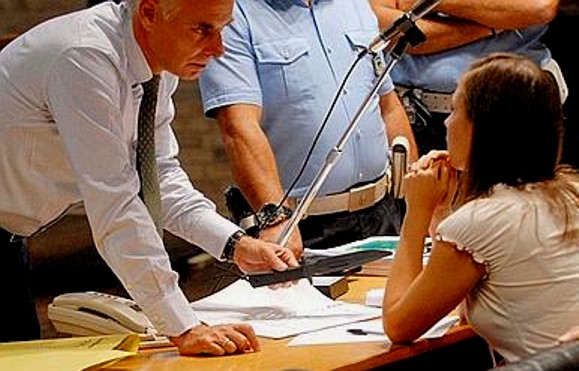
Lab work is believed to have continued today in the absence of the defense observers, and will continue on and off through to October 30th.
The defense observers may not have a further role at the laboratory. Most or all of the analysis leading to firm attributions of the DNA will be done by the Carabinieri team electronically.
It is that final attribution that the defenses are widely rumored to be so terrified of. That Knox’s DNA is there seems a given. The cliffhanger is whether Meredith’s DNA is there also.
Another possible mixed trace. If so it would be the sixth one.
Judge Massei did not arrive at a full scenario for how the five mixed blood traces at the crime scene could have been created. He described what was found by crime scene investigators and moved on.
After the 2009 Massei trial some further analysis was conducted.
With great help from Luciano Garofano’s DNA chapter in Darkness Descending and Barbie Nadeau’s and Andrea Vogt’s excellent reporting, we posted a comprehensive update mid-2011.
The locations of the five mixed traces at the crime scene are as follows.
1. Bathroom near Meredith’s room:
- On the drain of the bidet
- On the Q-tip box located at the ledge of the sink
- On the edge of the sink
Elsewhere in the apartment:
- In a luminol-enhanced bare footprint in the hallway outside Kercher’s room
- In a luminol-enhanced spot found in Filomena Romanelli’s room
Three sources for Knox’s blood have long been suggested: some bleeding from her ear, some bleeding from a possible nosebleed, some bleeding from the open scrape on her neck. .
All three of them could theoretically have been inflicted by Meredith as she struggled with the trio to save her life. None seem to explain why there were repeated MIXED traces.
That has remained a huge puzzle. But now we are looking at a fourth scenario: that Knox cut her hand with the top end of the blade as she stabbed at Meredith’s neck.
That could explain once and for all where Amanda Knox’s blood came from AND why it was mixed with Meredith’s blood. It happened right there.
[Click for larger image. Handle as from the blade direction. Sample is apparently from gap on sharp side.]
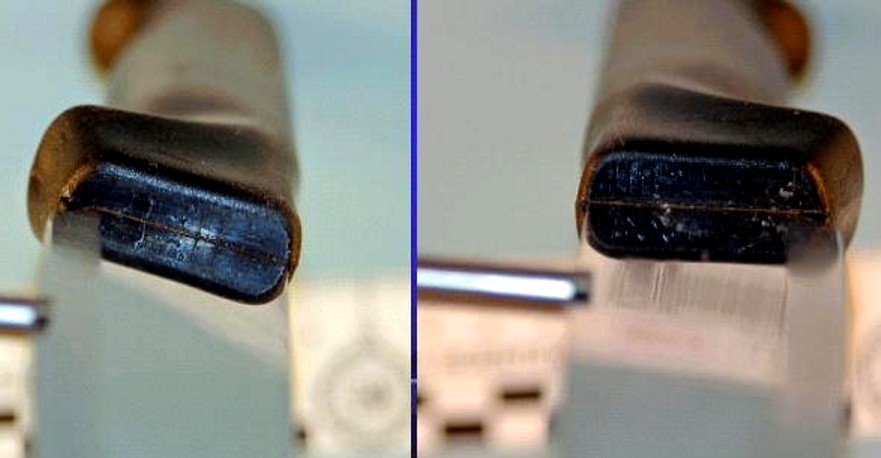
DNA Tests: Umbria24 Reporter Francesca Marruco Provides A Balanced Overview Of Possible Prospects
Posted by ziaK
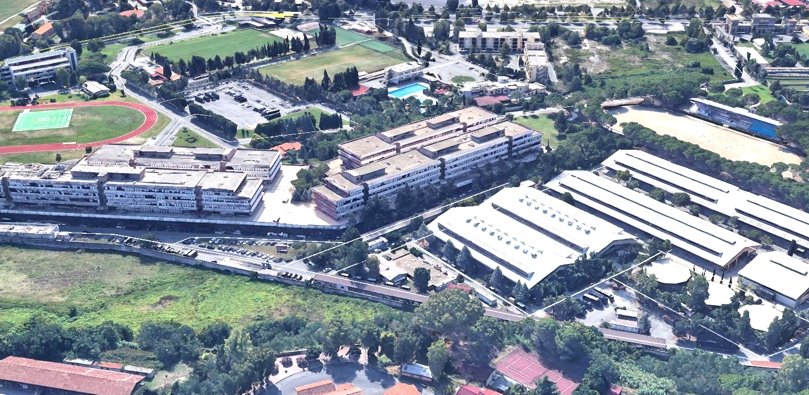
It may be that today or any day this week a definitive analysis of the seeming mixed DNA sample appears from an authoritative source.
Perugia-based Francesca Marruco did a lot of careful balanced reporting from Perugia early in the case. She has excellent official sources. She suggests in this report that the world might have to wait for the last day in October (deadline for the labs to report their analysis) or 6 November (next scheduled court session) for the official bottom line.
This is my translation. I am Italy-based also.
Kercher trial: unconfirmed reports on Amanda’s DNA: The experts will lodge their report [their truth] on the 30th [October]
By Francesca Marruco
The “I” trace identified on the blade of the knife could have come from the American woman, however the data could lend itself to contrary interpretations. The sentence could arrive before 30 November.
In order to obtain the definitive results of the analyses that the carabinieri of the RIS in Rome are carrying out on the “I” trace identified on the blade of the knife which is considered to be the weapon with which Meredith Kercher was murdered, we will have to wait until 30 October - the day on which the experts appointed by the Assise Appeal Court of Florence will lodge their conclusions. Already on Friday, the day on which the analyses were begun in the experts’ laboratories, uncomfirmed reports began to be leaked concerning the origins of that tiny quantity of DNA.
These leaks would like to ascribe it [the DNA] to Amanda Knox, the American student who was initially convicted and subsequently acquitted for the homicide of her flatmate, Meredith. But there is, as yet, neither certainty nor officiality, and - as this long case has taught us - even in the presence of officiality, opposing interpretations may be formed. If, in fact, as is being rumoured, those tiny biological particles did actually belong to Amanda Knox, this information could be interpreted in many ways.
Opposing interpretations - The defence would hasten to say that since Amanda had spent time in Raffaele Sollecito’s house - where the knife was discovered - there would be nothing strange if her DNA were to be on the blade. Just as - and this, at least, has been clearly seen - Amanda’s DNA was found on the handle of the weapon. Its presence could be explained by any banal procedure in the kitchen.
And indeed, Knox’s own defence has always maintained that the highly-contested trace “H” - the other trace identified on the blade, and which according to some is Meredith’s DNA - is nothing more than potato starch. Thus, Amanda would seemingly have left her trace on the knife while peeling potatoes.
Traces - It is very clear, however, that the Prosecution could claim that precisely that presence of Amanda’s DNA on the blade of the knife could be proof that Knox touched it. To peel potatoes, or to kill her flatmate Meredith, as the Prosecution holds? If it is confirmed, one can bet that the data [found by the RIS] will give rise to an “earthquake” and it will fall to the judges of the Florentine court to clear up the resuting debris.
On the other hand, they might decide not to consider it [the data] any more than the other elements [of evidence], since it effectively lends itself to a multiplicity of [possible] interpretations which cannot be confirmed at this point in time. Certainly, if that trace were that of the victim, Meredith Kercher, the proceedings might take a different direction, since there would then be two [traces] at that point, and not just one trace of the victim’s DNA which would have ended up on the blade of a knife which she never touched during her lifetime.
The certainties, or rather, the conclusions, of the experts will be lodged on 30 October. It is the 6th of November, however, which has been appointed for the hearing during which these results will be discussed before the Court and the parties.
Towards the verdict - Raffaele Sollecito may also be present in court on that date, as he announced via his lawyers, Giulia Bongiorno and Luca Maori. Sollecito intends to make various spontaneous declarations in order to affirm once again his non-involvement in the barbarious murder of Meredith Kercher, for which only Rudy Hermann Guede is currently in jail, with a sentence of 16 years in prison which has been confirmed[by the Supreme Court].
After the hearing in which the results of the tests entrusted to the Rome RIS will be discussed, it is very probable that the trial will travel rapidly towards sentencing - the fifth sentence pronounced by an Italian court with regard to Raffaele Sollecito and Amanda Knox. The Court President [leading judge], Alessandro Nencini, said during the first hearing that “this is a trial for matters of undeniable seriousness. Over and above the media circus, is Court’s desire to give all parties the most space possible for discussion, because there was a very significant sentence/conviction originally.”
By November - For this reason, “in order to obtain every possible factor for the matter we are trying here, the Court orders that the trace should be examined by the staff of the RIS in Rome”. The Florence Court’s sentence could thus arrive by the end of November, or at the latest by the end of the year. It is very unlikely that Amanda Knox will decide to be present at any of the hearings, and probably she will await the verdict in Seattle.
Perhaps the final word shall never be pronounced on the most Press-covered trial in Italian legal history. After this latest sentence, in fact, nothing prevents anyone from making further appeals to the Supreme Court.
Friday, October 11, 2013
The Carabinieri Laboratories In North-Central Rome Where Now Two Different Samples Need Attribution
Posted by Peter Quennell
Third update
Italy-based freelance reporter Andrea Vogt has tweeted the following: Leaks suggest DNA on knife shows knox genetic profile, but there is another profile being studied. Too early to interpret
Second update
Excellent comment on PMF by the poster Hugo which explains how the balance hasn’t changed.
The song remains the same. The republic contends that Amanda Knox used that knife to murder Meredith Kercher. The knife has yielded the DNA of just two people: Knox, in a position which indicates that she was gripping it, and Meredith, in a position which indicates that she was stabbed with it.
The defence can easily claim that Knox’s trace results from normal culinary use (although Stefanoni said the handprint indicated an atypical stabbing grip, with the knuckles on the same side as the blunt edge of the blade, and not a normal culinary cutting grip, with the knuckles on the same side as the sharp edge).
The problem is Meredith’s DNA at the sharp end. ‘Independent court-appointed expert’ Carla Vecchiotti admitted on the stand that this could not have arisen from laboratory contamination.
Professor Christopher Halkides’ suggestion that the contamination occurred during collection, because Stefano Gubbiotti acquired Meredith’s ‘aerosol DNA’ on his clothing, when he was supposedly in the house the same day, almost a week after the murder, and thus transferred the DNA from his clothing to his fingers to his evidence-handling gloves to the knife when he took it from Finzi’s envelope and re-packaged it in a stationery box at the Questura, is self-evidently absurd, fanciful, fictional and completely outwith the realms of actual forensic science.
And it’s not in evidence anyway, so it’s not an option open to the court.
Plus the objection to low copy number DNA is an American superstition not recognised in Europe. Unusually, it’s a scientific area where the US lags well behind. So you get hillbillies like Bruce Budowle grumbling, ‘Cain’t rightly say what that there newfangled LCN is, but ah reckon ah’m agin it.’ You’ll recall that a British appeal court has found that Bruce Budowle hasn’t the faintest idea what he’s talking about and also that, like Halkides, he tends to cite sources that don’t actually say what he says they say.
Knox is there on the hilt of the knife. And M is there near the point of the blade, and she’s trying to tell us something.
First update
The gap between the blade and handle of the knife was apparently widened to obtain the sample for the test. Sollecito lawyer Maori has claimed it is Amanda Knox’s. It is apparently adjacent to her previous trace.
If that is the case, the strength of the DNA evidence (which is very strong) remains unchanged. Dr Stefanoni identified Exhibit 36 on the blade as a strong trace of Merediith’s DNA. This was supported by various experts.
No contamination of that trace has ever been proved - or even a convincing contamination scenario put forward - and the video on top of the post below shows how the DNA charts for the sample and for Meredith totally match.
First post
Human DNA is widely reported in Italy to have been established from the sample never before tested on the large knife.
We may have to wait on an announcement from Judge Nencini in Florence as to whose DNA it is. That may not happen today.
These labs in the Carabinieri barracks are not far from the center of Rome. They are very well know to Italians because (images at bottom) “RIS” the Italian version of the show “CSI” is set there.
Thursday, October 10, 2013
Testing Of The DNA Sample Starts Today Though Possibly No Results Announced Before 6 November
Posted by Peter Quennell
1. ViaDellaPergola’s video
That video from 2010 illustrates how the existing positive tests described in the Massei Report were crystal-clear; subsequently Hellmann, Zanetti, Conti and Vecchiotti (all now being investigated) so muddied the water.
2. From our short-form Massei Report
This is from Part Three of the four-part abbreviation of the Massei Report done by Skeptical Bystander and a PMF team in mid-2011.
Exhibit 36: The double DNA Knife
Exhibit 36 is a 31 cm long knife with a 17 cm blade and a dark handle. It was seized from the kitchen cutlery drawer at Raffaele Sollecito’s home, located at 110 Corso Garibaldi in Perugia, on 6 November, 2007 when Chief Inspector Armando Finzi was ordered to perform a search of Sollecito’s residence. This exhibit is important because “Sample 36b” taken from a scratch on the knife blade yielded Meredith Kercher’s biological profile.
After putting on gloves and shoe coverings, Finzi and his team entered the home. They noted a strong smell of bleach. Opening the cutlery drawer, they saw a big, “extremely clean” knife. In Sollecito’s bedroom they found a second knife. The knives were bagged and sealed.[106]
Exhibit 36 was carried back to the police station, where it was placed in a box for shipping to the Polizia Scientifica in Rome. Dr. Stefanoni was the recipient of the box containing the knife in Rome. All parties testified that standard procedures were followed to avoid the risk of contamination.
On 4 November, 2007, Meredith’s roommates Filomena Romanelli, Laura Mezzetti, and Amanda Knox had been taken by the police to look at the knives in their kitchen at the apartment in Via della Pergola. Personnel from the Questura reported Amanda’s “severe and intense emotional crisis, unlike [the reaction of] the other two girls”.[292] This behavior was contrasted to Amanda’s behavior at Police headquarters two days earlier:
“This circumstance appears significant both in its own right and also when one considers that Amanda had never previously shown signs of any particular distress and emotional involvement (in the Police headquarters, on the afternoon of November 2, Meredith’s English girlfriends, Robyn Carmel and Amy Frost in particular, according to their declarations, had been surprised by the behaviour of Amanda, who did not show emotions).”[292]
Investigators’ attention was alerted to the Exhibit 36 knife because of Amanda’s inconsistent behavior. Later, police overheard a jail conversation between Knox and her parents on 17 November, when Knox said, “I am very, I am very worried about this thing with the knife ... because there is a knife of Raffaele’s ...”.[292]
Exhibit 36 thus became a central piece of trial evidence. The debate would subsequently be focused on two issues: The compatibility of the knife with the large stab wound in Meredith’s neck; and the reliability of the DNA analysis.
Considering the first of these points, although the knife blade is 17 cm long, the depth of the larger wound is just 8 cm . This “discrepancy” was the basis of defense efforts to discredit the knife as a murder weapon. The compatibility of the Exhibit 36 knife and the larger of Kercher’s wounds is addressed by Professor Bacci (see p. 121 of the Massei report). Professor Norelli maintains that “it is not said that a blade is always embedded (plunged into) the target right up to the handle; the blade may also go (in) only to a certain portion of its length, and not right up to its end”.[126]
It is noted that the movements of the victim may have played a part in determining the depth of the cuts. “If I insert a centimeter of the blade into the victim and the victim suddenly moves towards me, how much of the blade will be driven inside the body surface area is absolutely unpredictable and depends on the action of both”.[129] Alternatively, the blade of the knife might have met an obstacle. The cutting action is described on p. 146 and again starting on p. 152.
Defense witness Dr. Patumi disputed the compatibility of the wounds with said knife, arguing that a blade of 17 cm length could not have caused a cut 8 cm deep; see p. 156-157. However, the Court rejected “the thesis of the incompatibility of the most serious wound and the knife Exhibit 36”, holding this thesis to be “unacceptable” .[172]
Regarding the second point ““ that of the DNA analysis ““ Dr. Stefanoni was the responsible expert at the crime lab in Rome. Although no biological traces were visible to the naked eye on the face of knife blade, Dr. Stefanoni perceived scratches - “anomalies in the metal’ - on the blade when rotating the blade under strong lighting. The streaks were:
“... visible under good lighting by changing the angle at which the light hit the blade, since obviously the blade reflects light and thus creates shadows, making imperfections visible.”[196]
Sample 36b was taken from one of these points on the blade. The genetic profile of Meredith Kercher was identified from this sample. Stefanoni presented charts to the court, showing the DNA profile: she noted “that the peaks were a bit low, but that without doubt were still within the range that is considered useful for testing a specimen (page 108). Although of a much lower quantity of DNA, the profiles were nonetheless very present and, by making a comparison with Meredith’s profile, Dr. Torricelli reported that “šwe find all the alleles, and we find them to be equal to those obtained from the swab taken, from the sample taken from the wound. Therefore in this case too, without doubt”› -she continued- “šalthough we are confronted with a sample that contains very little DNA, it nonetheless contains the DNA of only one person and is therefore comparable to Meredith’s; with regard to this knife, I would say I have no doubt in interpreting it: specimen A with Amanda’s profile and specimen B with the profile, compatible with that of Meredith.”[231-32] However, the amount of DNA was small and it was all used up in order to run a single test.
The defense objected that it was impossible to evaluate whether the actual nature of Sample 36b specimen:
“.. when we have a small amount of DNA we talk about low copy number DNA, and that when this type of DNA is present, we are indeed able to carry out our amplification and obtain a profile, but we must remember that we may have lost one of the alleles, we may have an allelic imbalance ... it becomes very difficult to distinguish from a real allele, so that when working on ... small quantities of genetic material, it is necessary to be very cautious in interpreting the results.”[237]
To this point, Dr. Stefanoni argued that it is preferable “to know to whom a biological specimen is attributable, rather than ascertaining the nature of that specimen, without attributing it to anyone.”[288]
Furthermore, it was argued by the defense that the quantity of DNA was too low to be able to perform the tests and consider the results reliable. Given a low amount of DNA, the risk of contamination is high - particularly given the very numerous number of samples being analyzed.
The court rejected the possibility of contamination because no anomalies were ever identified in the Polizia Scientifica’s analytical process. The Prosecutor pointed out that all tests had been carried out in the presence of a lawyer/consultant for the defense - who had raised no objections during the testing. The possibility of contamination during the collection of evidence was rejected based on a detailed consideration of the collection process.
Thus, the DNA from Meredith which was found on that knife cannot be traced back to any contamination occurring in the house in which it was found, or to the method of acquisition of the knife on the part of Finzi, or even to the collection and dispatch methods used by Gubbiotti. In addition, as has been said, that such contamination could have been carried out by the laboratory is also ruled out.[266]
In addition, Dr. Stefanoni testified that she did have the biological profile of the defendants, but did not employ them while interpreting the electrophoresis diagrams. Nevertheless, the Massei report judges that:
“... the main criticisms advanced by the defense concerned precisely this very small DNA quantity, and it raised the question of the reliability of the result obtained.”[288]
To this central point, Dr. Stefanoni:
“Regarding the too low quantity of DNA, Dr. Stefanoni declared, as has been seen, that even in the case of a particularly scanty amount of material, the analysis and evaluation should be performed, and she added that, if the data that emerges is absolutely readable and interpretable and the correct laboratory practice was followed, the result is reliable and there is no reason to repeat the test.
“It does not follow ... that the data is unusable and unreliable as a consequence of a lack of repetition due to a lack of further quantities of DNA. It is necessary, instead, to take account of the data that emerges from such a specimen and to check for the ““ possible ““ presence of other elements, both circumstantial and inherent to the data itself that, despite the lack of repetition of the analysis, could allow an evaluation of the reliability of the analysis and of its outcome.”[289]
The court concluded that the biological profile that resulted from the 36B DNA analysis ...
“... gave a biological profile attributable to the person who was mortally wounded with that very knife: a result, therefore, that was entirely reasonable and consistent with the event; [it was] certainly not explainable as a mere coincidence, and it must be ruled out ““according to what has already been observed in this regard - that it could have originated from contamination or from the use of a suspect-centric method.”,[290] and that
“”¦. it should therefore be affirmed that the analysis of trace 36B, which detected the presence DNA attributable to Meredith, appears to be completely reliable.”[293]
3. TJMK posts on the latest DNA science
1. Poster Fy By Night: The Hellmann-Zanetti Appeal Court’s DNA Consultancy Looks Even Worse In Face Of The Latest Science
2. The Machine A New DNA Analysis Strongly Implicating Sollecito Seems to Have The Defense Forces Extremely Rattled
4. Sollecito tries to wind back the “pricked” claim
Our lawyer SomeAlibi recently explained how.
5. Andrea Vogt posts possible scenarios.
Scroll down to UPDATE OCT. 9, 2013 An excellent weighting of the possibilities.
The DNA could be Meredith’s, which would dramatically hurt thr defenses. It could be Rudy Guede’s, which would dramatically hurt thr defenses. Or it could be neither (or untestable) which would nt neccessarily affect the outcome. .
Tuesday, October 08, 2013
Questions For Knox and Sollecito: Why Claim Rudy Guede Did It Alone When So Much Proof Against?
Posted by Marcello
1. Problems Of Your “Guede did it alone” Mantra
Your attempts to frame Guede for the entire attack sound racist, and they fly in the face of a multitude of hard facts.
Why are you and your more untethered supporters arguing to the media that Rudy Guede alone attacked Meredith (he could not have), that he was a drifter (he wasnt), a burglar (he wasnt), and drug dealer (he wasnt), and that his DNA traces are “all over Meredith’s room” (they werent)?
There are surprisingly few DNA traces of Guede in there, and outside Meredith’s door there is only evidence of (1) his prior use of the south bathroom, and (2) his shoeprints headed straight for the front door.
There is zero evidence that Rudy Guede was ever in the shared bathroom (the one with Sollectio’s bloody footprint on the bathmat) and zero evidence he was in Filomena’s room (the one with the broken window and the mixed DNA of Meredith and Knox).
2. Evidence Against You Is Far, Far Stronger
Explain if you can about Sollecito’s bloody footprint. Explain if you can about the evidence of cleanup. Explain this and this about your multiple contradictory alibis.
Explain if you can why YOUR own witnesses Alessi and Aviello were such disasters for your side in court. Explain your cell phone actions (or non-actions) and the timing and content of your phone calls, and your computer actions (or non actions).
Explain why in Sollecito’s book he claims he sent several emails throughout the night; but there zero records of such emails with his email provider. Explain why both Sollecito and Knox framed Dr Mignini.
There are three compelling reasons above all why the Massei court and the Supreme Court will remain totally unbending on the point that Guede did NOT attack Meredith alone, and that it had to be a pack attack on Meredith.
- One is the full day of closed court testimony at trial by crime-scene experts from Rome who accounted for every point of evidence in Meredith’s room with a depiction of a 15 minute pack attack involving three people. This seriously upset the jury and your own defense was left essentially speechless.
- One is the prosecution’s video shown in closed court during Summations of the recreation of the attack on Meredith, which accounted for every point of evidence with a 15 minute pack attack involving three people. This seriously upset the jury and your own defense was left essentially speechless .
- One is that the entry of an attacker via Filomena’s room is so absolutely unbelievable. Your own defense always knew this, and barely tried to make that sale (hence the witnesses Alessi and Aviello).
There are seven other routes for a burglar to enter the house, all of them faster and quieter and five of them darker. You can see five in these images below: two via the east windows, three up onto the balcony and into the house via the louvre door or the kitchen window.
All seven routes would be obvious to any burglar, long before he walked all the way around the base of the house to beneath Filomena’s window (which he did several times in your scenario).
3. The Numerous Questions From Which You Hide
On or after 6 November you have both promised to appear in the appeal court in Florence. You are apparently too nervous to face cross-examination under oath, but you have said you intend to try to explain things.
- 1) Rudy Guede had been to the apartment at least twice already on prior occasions and knew the boys who lived in the lower story. Why did Guede choose to NOT break-in to the lower story where he knew (or could ascertain) that all four boys were away on holiday, and therefore could break-in and rummage with some certainty of not getting caught?
2) Why did Guede choose to break-in to the upper story of the villa mid-evening, when he surely knew Knox and Kercher would be staying at the villa for the holidays and could have been there or returned at any time to “catch him in-the-act”?
3) Surely Guede would have verified that no one was present by circling the cottage and checking if any lights were on in the windows? But Guede “missed” the really easy way in: the balcony in the dark at the rear, used in 2 burglaries in 2009.
4) If Guede did circle the cottage to make sure no one was there before attempting the break-in, why would he then choose the most visible and more difficult path of entry through a second story window, as opposed to the more hidden and easier path of break-in at the back of the villa, which he would have noticed while circling the villa?
5) Why would Guede choose to break-in through a second story window that was highly exposed to the headlights of passing cars on the street as well as exposed to night lighting from the carpark?
6) Ms. Romanelli testified that she had nearly closed the exterior shutters. Assuming her memory is correct, there is no way a burglar could easily verify if the windows were latched and if the inner scuri were latched to the window panes, which would make access to the window latch impractical unless one was armed with a core drill or an ax. Why would Guede, who was certainly familiar with such windows, choose to attempt the break-in through a window that he could not easily verify would allow him quick access?
7) Assuming the shutters were closed, Guede would have to climb up the wall and open the shutters before smashing the window with the rock. The night of the murder, the grass was wet from rain the previous day. Why was there no evidence of disturbed grass or mud on the walls?
8) Guede had Nike sneakers, not rock climbing shoes. How did he manage the climb up the wall with that type of footwear?
9) If the shutters were closed, or somewhat closed, how did Guede manage to lift himself up to the sill with only an inch of sill available to grab onto?
10) Assuming Guede opened the shutters, how did Guede verify if the inner scuri where not latched to the window panes, which would prevent access to the window latch? There was no light inside Ms. Romanelli’s room to reveal that the scuri were ajar.
11) Assuming Guede managed to check that the inner scuro behind the right-hand window was not latched, how did he manage to break the glass with a 9 lb rock with one hand while hanging on to the sill with the other?
12) Assuming Guede managed check that the right-hand inner scuro was not latched, how did he break the glass with the rock without having glass shards fly into his face?
13) If Guede climbed down to the lob the 9 lb rock at the window from 3 meters below, how would he do so to avoid glass shards raining down on him?
14) If Guede climbed down to the lob the rock at the window from below, why would he choose a 9 lb 20 cm wide rock to lob up to a window 3 meters above him, with little chance of striking the window in the correct fashion?
15) If Guede climbed down again and climbed back up to the carpark (up a steep slope with slippery wet grass and weeds) to lob the 9 lb 20 cm wide rock from the car park, why is there no evidence of this second climb down on the walls?
16) Why did Guede choose a 9 lb 20 cm wide rock to throw from the car park, given that a large, heavy rock would be difficult to lob with any precision? Especially considering that the width of the glass in the window pane is only 28 cm wide, surely anyone, experienced or not, would have chosen a smaller, lighter rock to throw with greater precision.
17) If Guede lobbed a 9 lb 20 cm rock from the car park, such a lob would require some velocity and therefore force. Guede would have been roughly 11-12 feet away from the window, in order for the lob to clear the wood railing at the carpark. If the rock was thrown with some velocity, why is the upper 1/2 of the glass in the window pane intact, without any fracture cracks at all?
18) If Guede lobbed a 9 lb 20 cm rock from the car park, such a lob would require some velocity and therefore force. Why is there so little damage to the scuro the rock hit, so little damage to the terrazzo flooring impacted by the rock, and so little damage to the rock itself, which surely would have fractured more on impact with a hard terrazzo floor?
19) Why was there no evidence of glass shards found in the grass below the window?
20) If Guede climbed the wall to open the shutters, climbed down and up to the car park to throw the rock, then climbed back down and up again to the window, how does he manage to hoist himself onto the sill without cutting himself on the glass that was found on the sill?
21) If Guede climbed the wall to open the shutters, hoisted himself onto the sill, tapped the glass with a 9 lb rock to lightly break the glass in a manner more consistent with how the window was broken, why did he throw the rock into the room, rather than let it fall into the grass below?
22) Why was no dirt, grass, muddy shoeprints or similar trace evidence found on the window sill?
23) Why was no dirt, grass, muddy shoeprints or similar trace evidence found in Romanelli’s room?
24) If Guede climbed the wall to open the shutters, climbed down and up to the car park to throw the rock, then climbed back down and up again to the window again, hoisted himself onto the sill without cutting himself on the glass that was found on the sill, unlatched the window and stepped inside Filomena’s room, how did he manage to get glass on top of Romanelli’s clothing that was found under the window sill?
25) Why would Guede, who would have spent a good 10 minutes trying to break and enter with the climbing up and down from the carpark, waste valuable time throwing clothes from the closet? Why not simply open the closet doors and rifle through the clothes without creating more of mess?
26) Why did he disregard Romanelli’s laptop, which was in plain view?
27) Why did Guede check the closet before checking the drawers of the nightstand, where surely more valuable objects like jewelry would be found?
28) Why were none of the other rooms disturbed during the break-in?
29) Assuming Ms. Kercher arrived to the cottage after Guede’s break-in, presumably when Guede was in the bathroom, why did she not notice the break-in, call the police and run out of the cottage?
30) Assuming Guede was in the bathroom when Ms. Kercher returned, why go to the extent of attacking Ms. Kercher in her room rather than try to sneak out the front door, or through the window he had just broken, to avoid if not identification, at least more serious criminal charges?
31) Assuming Ms. Kercher was at the cottage while Guede broke-in, why did she not call the police the moment she heard the rock crash through the glass, loudly thud to the terrazzo floor and investigate what was happening in Romanelli’s room while Guede was climbing back down from the car park and climbing back up to the window?
32) Assuming Ms. Kercher was at the cottage while Guede broke-in, Guede could have been on the sill already because he had tapped the glass with the 9 lb rock to break it. Therefore perhaps Guede was already partially inside Romanelli’s room when he was discovered by Ms. Kercher. In this case Guede follows Ms. Kercher to her room in an attempt to dissuade her from calling the police and the assault ensues. But then, if this scenario is correct, when does Guede have time to rifle through Romanelli’s clothing and effects?
33) Why is there a luminol revealed footprint in Romanelli’s room that has mixed traces of Knox’s and Kercher’s DNA ?
34) Why does this footprint not match Guede’s foot size?
35) If multiple attackers were required to restain Ms. Kercher, holding her limbs while brandishing two knives and committing sexual violence, then who else was with Guede and why no traces of this 4th (or more) person(s) were found, either in shoeprints, footprints, fingerprints, DNA or otherwise?
36) If Guede and others were involved in the assault, why has Guede not acknolwedged them, and instead consistently hinted that, and finally admitting that Sollecito and Knox were with him during the assault?
37) If Guede and others were involved in the assault, why do the other shoeprints, footprints, DNA traces and fingerprints all point to Knox and Sollecito being present during the assault, in one way or another?
4. Italy Is Not Buying The Racist Mantra
If your racist mantra remains “the black guy did it alone” and “Italians are corrupt and stupid” you need to PROVE that. If you cannot answer all of these questions above, this will deservedly cook you.
You could be facing 30 years with the “mitigating factors” canceled and the new penalties you will incur for your dishonest books and PR campaigns.
[Five easier ways in: 3 via balcony (note two drainpipes, window grid below), 2 via side windows]
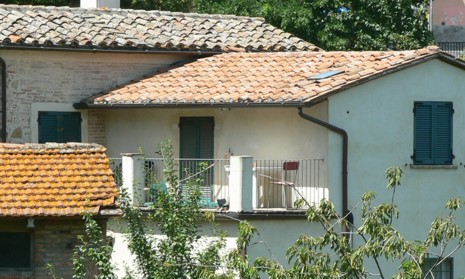
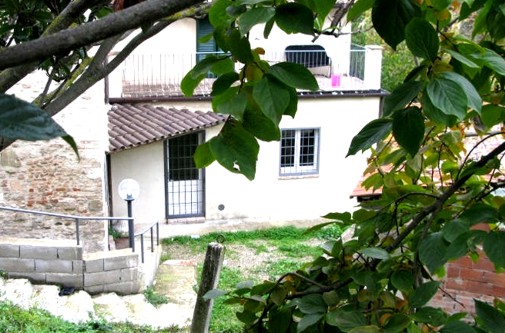
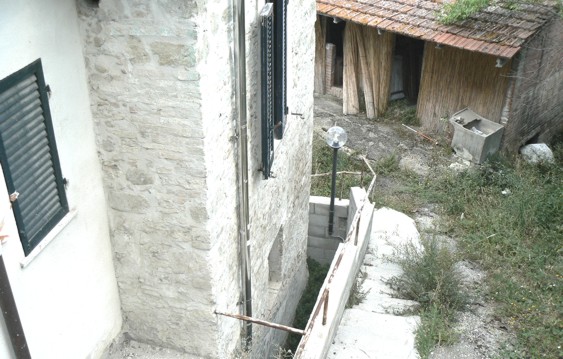
Wednesday, October 02, 2013
Appeal Session #1(B) Detailed Report On Enquiries The Court Has Okayed
Posted by Our Main Posters
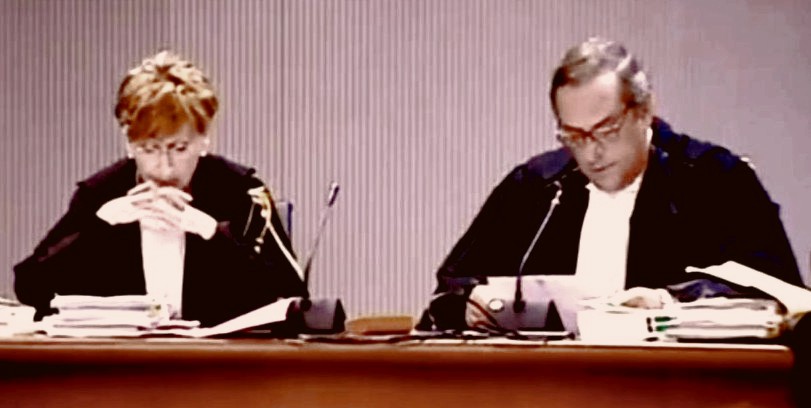
[Above the two co-judges with lead judge Allessandro Nencini reading the case history]
Explanation
The previous post listed what has already been agreed to by the court to guide the appeal. This report which only became available later describes what had been the prosecution and defense requests.
Translation From The Umbria24 website
Meredith, war of requests in the first hearing of the 2nd Appeal
The court has order a new test on the I trace and on the hearing of the witness Luciano Aviello. Rejected all other requests
By Francesca Marruco
After a little over 2 hours in counsel chambers the Florence Court of Appeals has decided to order a new test on the trace evidence of the knife seized in Raffaele Solecitto’s apartment, the weapon presumed to have been used in the murder.
The Court has also decided to hear the witness Luciano Aviello but rejected all the other requests for renewal of investigations presented by the defense. The Court resumes on Friday with Aviello and the assignment of the task of the new genetic analysis to the Carabinieri del Ris of Rome.
[The appeal] this morning in the maxi courtroom no. 32 of the Florence Justice Courthouse, commenced the new appeal for the murder of Meredith Kercher, after the annulment of the acquittal by the Supreme Court.
Present in the courtroom was only Patrick Lumumba. Absent, as expected, were the two appellants, Amanda Knox and Raffaele Sollecito.
- 9:00 Francesco Sollecito, father of Raffaele, says he is tranquil about the outcome of the new trial. Responding to journalists, he specified “The statement of the Supreme Court is compromised by errors committed because the judges did not have full access to all of the proceedings, as they themselves indicated.”
- 9:45 The defense of Knox and Sollecito have asked for the exclusion of the Patrick Lumumba (civil) party because the conviction of Amanda for calunnia has already been passed into final sentence.
This request was opposed by the General Prosecutor Alessandro Crini, and the lawyer of Lumumba. For them the plaintiff’s civil right is legitimate, as the Supreme Court has asked this court to re-evaluate the penalty in light of the finalized sentence of Knox.
The Court retired to counsel chambers to decide, announcing it wanted to decide today on any reopening of the investigation.
- 10:15 The court rejects the request of the defense of Knox and Sollecitto to exclude the civil party Patrick Lumumba, because the Court specifies that, among other things, the offense was not assessed in totality by the trial court.
- 10.50 The President of the Court of Appeals, Allessandro Nencini, is initiating his introductory report, starting from the day of Meredith’s homicide. The judge travels trough the most important passages of the three Courts. Speaking of the trace, secured by the consultants of the second [Hellman] Court, on the knife (considered the weapon of the crime by the first Court) President Nencini said: “It is necessary to underline that the independent consultants had found another trace; but it was not analyzed”.
- 11:15 The President of the Court, Judge Nencini, at the end of the introductory report, said: ” This is an appeal for matters of undeniable seriousness beyond the media spectacularization. Thus the Court is willing to give all possible space for debate to all of the parties, because originally there was a solid verdict, and the actions on which we proceed are of undeniable seriousness”
- 11.25 Raffaele Sollecito defense lawyer Giulia Buongiorno was the first to take the floor.
]Bongiorno:] Sollecito’s defense does not ignore the motivations of Cassazione, and we are in favor of any kind of verification that the Court will order, with the following caveats. This proceeding has always been based on two types of evidence, the testimonial and the technical. We request that during this proceeding, which we hope to be the last one, that the Court during the next hearings will concentrate only on the truly reliable evidences, putting aside those that are nullified by media conjecture.
Many witness have said things because they have read them or heard them. The proceeding was reopened, but not to collect this type of guesswork. We do not want to inflate this proceeding with new conjectures. We request to examine in depth the crime observed, as emphasized by Cassazione. In the crime scene room there are copious traces of two of the four claimed present persons, the victim and Rudy Guede who admitted to having been there, and none of the two appelants except on the hook of the victim’s bra.
When the Prosecutor asserts that there are no traces because Amanda and Raffaele cleaned them, we think that this is impossible. For this reason we request to have a evaluation done in order to verify if it is possible to clean selectively… A Cassazione mistake was that it didn’t notice the entry into the crime scene room before the bra hook was found, so we request the acquisition of two reports [on that].
We want to understand if in a sealed place it is possible to get firm evidence even after the admission by the police of other searches. We do not request to simply take the hook and to say that it is contaminated, we want to know if in that environment it was possible to collect some genuine evidence, because at the crime scene there were not ten traces of Raffaele but only that one”.
A subordinate request by Giulia Buongiorno is that experts, new experts or the ones at the Hellman appeal, will read the electropherograms. Buongiorno requests the analysis of both of Meredith Kercher’s cell phones that she consider the “black box” of the crime and that they “were never analyzed deep enough by the Corte d’Assise di Perugia” The defense requests also analysis of the presumed sperm trace on Meredith’s pillowcase.
- 12.15 Amanda Knox defense lawyer Carlo Della Vedova takes the floor and raises right away an exception to the judge’s stipulations. “Are we today able to judge on matters that happened six years ago? Can a person be under proceeding for life? Are we sure that Amanda Knox is an accused like all the others? Is it right, the indefinite delay of this proceeding? For all of this I insist that the Court evaluate the constitutionality.”
- 13.00 The Kercher family’s lawyer produced a letter written by the family members of Meredith that read “We are confident that the evidences will be reexamined and all the requests of more evidences will be granted, in a way that all the unanswered questions will be clarified and that the Court can decide on a future way of action in this tragic case. The past six years have been the most difficult of our lives and we want to find an end and remember Meredith as the girl that she really was rather than remember the horror associated with her”.
-14.00 The General Prosecutor Alessandro Crini says he is against the request of the defense to hear anew from some witnesses, including Rudy Hermann Guede. The same argument Crini voiced for the majority of the requests of the opening introduction presented by the defense. In conclusion, he asked for the the addition of the evaluation of the “I” trace, isolated by the independent experts, but never analyzed because they claimed it was believed to be Low Copy Number. Furthermore the prosecutor asks that the witness Aviello be reheard.
-15:00 The lawyers of the civil part that represent the Kercher family support the request of the General Prosecutor Crini, and opposed the requests of the defense. The lawyer Francesco Maresca said he believes that the defense attempts to frame with a new “dress” evidence that is strong, resistant, and robust, from the findings of the trial court, and that were minimized by the first appeal court. For example, the witness Capezzali.
Also there are newly framed certain requests that are obsolete, that have already been actioned. Like that of the selective cleaning. In the bathroom next to the room of the crime, there were many mixed traces of DNA of Amanda and the blood of Meredith. And the genetic profile of Sollecito, besides on the bra hook, was present only mixed with that of Amanda on a cigarette butt, then how did it migrate, only that one, from the cigarette butt to the bra hook?
- 15:10 The defense of Raffaele Sollecito maintains the request to analyze the “I” trace, but opposes hearing from the witness Luciano Aviello. Buongiorno also pointed out that it is not true that the independent experts of the second court decided automatically to not analyze certain traces, but did so in the presence of the prosecution experts Stefanoni and Novelli and those of the defense. Carlo Dalla Vedova, for the Knox defense, said that Avelio should be heard only to demonstrate that the police uses him two different ways. Like when Avelio said he knew where the crime weapon was.
- 15.30 The Court retired in council chamber and announced that will not come out before 17.30
Conclusion
Thereafter the court convened again and the decisions were as outlined in our post below this one. Almost all of what the defense had argued for - each of them a stretch if you know the full circumstances - was denied.
And the two main requests from the prosecution - that Aviello be put back on the stand, and the large knife be retested - were accepted. Ourcomes of these may or may not add to the strength of the prosecution’s case, but seem to offer no prospects of joy for the defenses.
Friday, September 27, 2013
Questions For Sollecito: Why So Many Contradictory Explanations Of How DNA Got On The Knife?
Posted by SomeAlibi
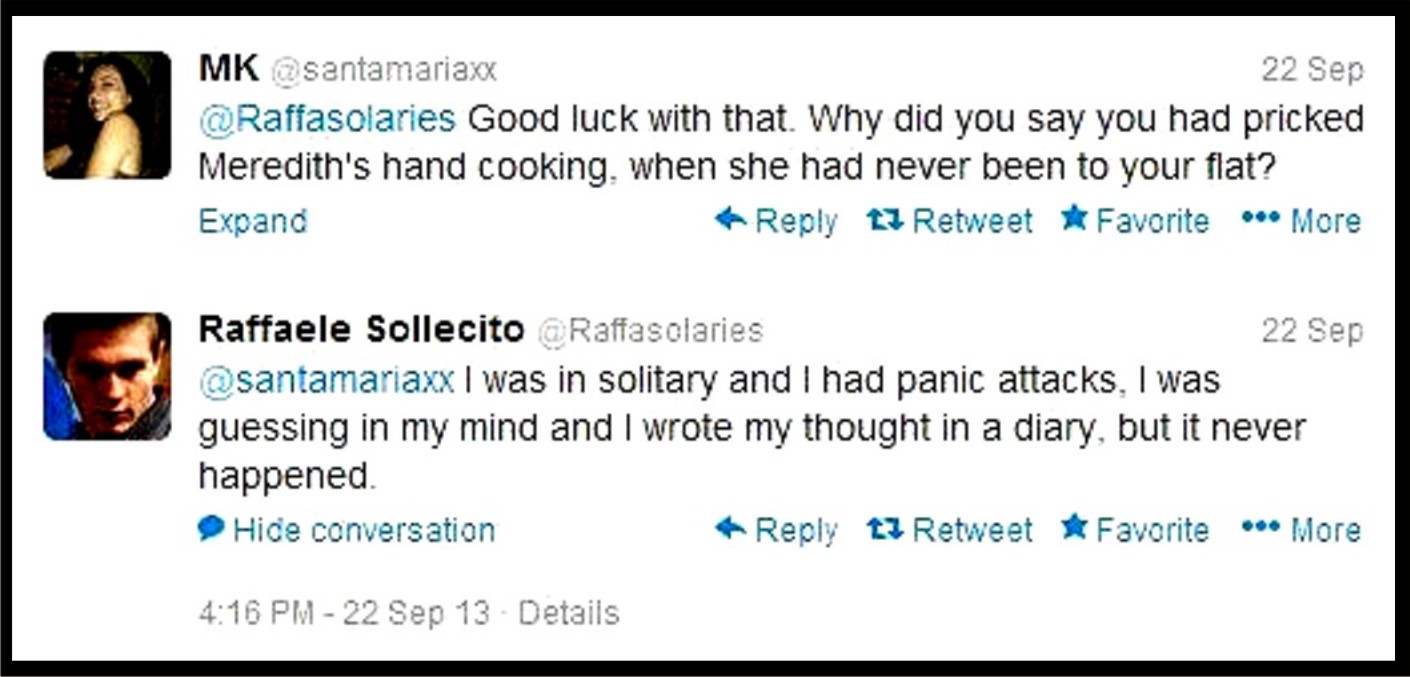
It is no secret (except seemingly to him) that Sollecito’s book and web postings will once again land him in court.
This trial will be separate from the main appeal though the prosecution office will be the same. It will be for alleged contempt of the court in serially mis-stating the evidence and accusing many officials of crimes in an attempt to get public opinion to lean heavily on the courts.
The Amanda Knox brigade has been trying that too, and look at how well that is working out!
Here is one seemingly perfect example of how Sollecito (finally responding to the pressures and pleas of his discombobulated lawyers?) may be trying to wind things back. You will recall that news of the discovery of a large knife in his kitchen drawer with Meredith’s DNA on it was related to Sollecito while he was in his prison cell, just over two weeks after the murder.
As much as the news initially panicked him, shortly thereafter on November 18th, 2007, he seemed relieved to have realised how Meredith’s DNA could have come to be on his kitchen knife after a session of, in his written words, “thinking and remembering”. He wrote in his diary:
The fact that there is Meredithʹs DNA on the kitchen knife is because on one occasion, while we were cooking together, I, while moving around at home {and} handling the knife, pricked her hand, and I apologized at once but she was not hurt {lei non si era fatta niente}. So the only real explanation for that kitchen knife is this one.
And that was it: Raffaele had “fortunately” remembered how he had “pricked” Meredith’s hand and that explained the DNA. He remembered it in precise detail - thank heavens for that!
The problem for Raffaele was that he didn’t know at this stage that the DNA was in a microscopic groove on the blade and not on the tip. The story made no sense. Worse, he was also flatly contradicted by the flatmates, the friends and even Amanda: he had never been cooking with Meredith and his story was therefore impossible as well as implausible. And since he was a murder suspect, the memories and all their specificity which would have given him an alibi for the DNA, became highly suspicious.
Unfortunately, Raffaele chose to remain silent thereafter and never testified, as was his right, at his trials.
Subsequently there were many months of Team Knox-Sollecito denying that Raffaele meant Meredith, in contradiction of all plain logic when reading the simple words in his diary. No, said the online apologists, in fact he meant Amanda’s hand and in some way he had thought that maybe Meredith’s DNA had been on Amanda and could have transferred. It wasn’t his fault that his theory was wrong, it was just an honest memory of being with Amanda and nothing suspicious at all.
On Twitter on September 22nd, Raffaele decided, probably unwittingly as is his wont, to blow that theory up. He was asked about the diary entry by Twitter user MK @santamariaxx and responded thus:
He replied as in the image above.
So, he didn’t really mean Amanda at all (thank-you for all the wasted hours of excuse making for Raffaele to those protagonists of that particular theory), but now we learn it was a false memory about Meredith that never happened.
But let’s unpick this because it’s far from a single mis-remembered sentence or action. This was a contemporaneous diary entry made barely two or three weeks after such a cooking event could have happened and it was a multi-faceted event with multiple actions. He was clear and precise about what happened in detail. Now, he is quite clear the whole thing never happened:
- 1. He said he was cooking together with Meredith - but that never happened
2. He recalled himself “moving about” during the cooking session - but that never happened
3. He remembered the location “at home” - but was never there in this context
4. He remembered putting a knife that he was holding into / onto Meredith’s hand - but that never happened
5. He remembered actively apologizing to Meredith for that clumsy act - but that never happened
6. He remembered the act of them examining Meredith’s hand and mutually discovering that she had not been hurt - but that never happened
7. He remembered that this was the real explanation of the kitchen knife - but it never happened
Sollecito was on his own in a cell, not under interrogation, and spending time “thinking and remembering” on November 18th. What he remembered, in detail, was a multi-part sequence of events with a girl who had been murdered barely two weeks before. He remembered the minutiae of what happened and its sequence when he believed he needed to provide an alibi for the identification of the DNA on his knife.
None of Amanda Knox’s vagueness about these memories - they were particular and specific in the finest detail. So fine and specific that when he was caught out that this could not have happened, those details looked highly like someone seeking to convince precisely because of the particularity of the details. It was in the time-honoured form: “no, no - it definitely happened, because I specifically remember”..... 7 distinct and separate memories and the sequence in which they occured.
But all those things never happened according to Raffaele Sollecito in 2013.
Knox and Sollecito have never stopped the self-serving lies and flat contradictions of themselves. Not now, even after all this time, even after one them is permanently stained as, at a minimum, a convicted liar who criminally tried to frame a man for murder. Sollecito, “not hiding” in his secret location, can’t stop either. Little good it will do either of them. Finally, justice is coming and the lies will be at end. I’d almost feel sorry for him, if he wasn’t then and remains now, an inveterate liar without the honour to face justice in the country of his birth.
Sunday, September 22, 2013
Questions For Knox: Ten Hard Questions That Knox Should Be Asked Monday On ITV’s Daybreak
Posted by The Machine
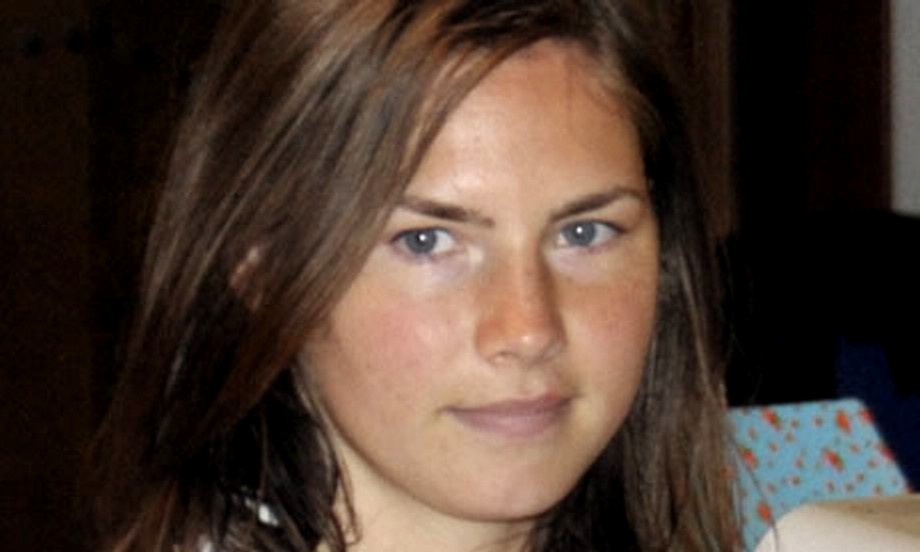
Amanda Knox will be interviewed for the first time in Britain on ITV’s Daybreak programme tomorrow.
No interviewer should unquestioningly accept everything Knox says as the gospel truth. Remember Knox served three years in prison and is labeled a convicted felon for life for malicious lying.
So let’s hope tomorrow’s interview is not yet another whiny mis-statement of the core facts, and not yet more sliming of Italian officials, of which we have just seen so many.
There are many questions on this site which Knox has never ever answered. Some arise from the evidence and some from her dishonest book.
See especially the tough questions here and here and here and here. With luck the Daybreak hosts will ask Knox all of these tough questions below.
1. Multiple false alibis
You and Raffaele Sollecito gave completely different accounts of where you were, who you were with and what you were doing on the night of the murder. Neither of you have credible alibis despite three attempts each. Sollecito told Kate Mansey from The Sunday Mirror that you and him were at a party.
He told the police that you and him were at his apartment. He then told them that he was home alone and that you weren’t at his apartment from around 9.00pm to about 1.00am. You first told the police that you were at Sollecito’s apartment. After you were informed that he was no longer providing you with an alibi, you repeatedly claimed that you went to the cottage with Diya Lumumba.
You changed your story yet again and claimed that you were at Sollecito’s apartment, but he might have gone out. All the other people who were questioned had one credible alibi that could be verified.
Extract of Sollecito’s witness statement.
“I went home, smoked a joint, and had dinner, but I don’t remember what I ate. At around eleven my father phoned me on the house phone. I remember Amanda wasn’t back yet. I surfed on the Internet for a couple of hours after my father’s phone call and I stopped only when Amanda came back, about one in the morning I think.
Question 1. Why did you and Raffaele Sollecito repeatedly tell the police and others a pack of lies?
2. False accusation
You falsely claimed that Diya Lumumba killed Meredith in two witness statements and you repeated the false accusation in your handwritten note to the police on 6 November 2007. You served three years in prison for this felony and your appeal to the Supreme Court was denied.
Question 2. Why did you repeatedly accuse Diya Lumumba of murder when you knew full well that he was completely innocent and why didn’t you or your mother retract your accusation when he was in prison?
3. The Double DNA Knife
According to a number of independent forensic experts - Dr. Patrizia Stefanoni, Dr. Renato Biondo, Professor, Giuesppe Novelli, Professor Francesca Torricelli, Luciano Garofano, Elizabeth Johnson and Greg Hampikian - Meredith’s Kercher’s DNA was found on the blade of a knife from Raffaele Sollecito’s kitchen.
He falsely claimed in his prison diary that he had accidentally pricked Meredith’s hand whilst cooking. Dr Stefanoni analysed the traces on the knife six days after last handling Meredith’s DNA. This means that contamination couldn’t have occurred in the laboratory.
Meredith had never been to Sollecito’s apartment, so contamination away from the laboratory was impossible.
Question 3. How do you think Meredith’s DNA got onto the blade of the kitchen knife?
4. The bra clasp
An abundant amount of Raffaele Sollecito’s DNA was found on Meredith’s on the exact part of Meredith bra clasp that was bent out of shape during the attack on her. His DNA was identified by two separate DNA tests. Of the 17 loci tested in the sample, Sollecito’s profile matched 17 out of 17. Professor Torricelli testified that it was unlikely the clasp was contaminated because there was a significant amount of Sollecito’s DNA on it.
Professor Novelli analysed the series of samples from all 255 items processed and found not a single instance of contamination, and ruled out as implausible that a contaminating agent could have been present just on one single result. David Balding, a Professor of Statistical Genetics at University College London, recently analysed the DNA evidence against Sollecito and concluded it was strong.
Question 4. How do you think Raffaele Sollecito’s DNA ended up on Meredith’s bra clasp?
5. The bloody footprint on the bathmat
According to two imprint experts - Rinaldi and Boemi - the bloody footprint on the blue bathmat in the bathroom matched the characteristics of Sollecito’s foot, but couldn’t possibly belong to Guede. Rudy Guede’s bloody footprints led straight out of Meredith’s room and out of the house which indicates that he didn’t go into the bathroom after Meredith had been stabbed.
See our past posts on this here and here.
Question 5. Who do you think left the bloody footprint on the bathmat?
6. Mixed samples of Amanda Knox’s DNA or blood and Meredith Kercher’s blood
According to the prosecution’s experts, there were five instances of your DNA or blood mixed with Meredith’s blood in three different locations in the cottage. Even your lawyers conceded that your blood had mingled with Meredith’s blood. In other words, Meredith and Amanda Knox were both bleeding at the same time.
Question 6. Why were you bleeding on the night of the murder and is it a coincidence that only your DNA was found mixed with Meredith’s blood?
7. The Luminol Enhanced Footprints
Bare bloody footprints were revealed by Luminol at the cottage. Three of them are compatible with your foot size and one of them is compatible with Raffaele Sollecito’s foot size.
Question 7. What do you think the Luminol was reacting to - Meredith’s blood or some other substance?
8. The staged break-in
There is absolutely no evidence that anyone stood outside Filomena’s window and climbed up the vertical wall on the night of the murder. There were no marks from soil, grass or rubber soles on the wall. The earth of the evening of 1 November 2007 was very wet, so if anybody had climbed the wall, they would have left some marks on it.
The glass on the window sill and on the floor show no signs of being touched after the window was broken, which would have been the case if the intruder had gained entry through the window.
There was not a single biological trace on any of the shards of glass. It would have been very likely that an intruder balancing on the window sill would have suffered some kind of injury or cut because of the shards of glass.
If the window had been broken from the outside, there would have been shards of glass outside, but there wasn’t even one.
Judge Massei and the panel of judges at the Italian Supreme Court specifically mentioned the shards of glass on top of Filomena’s clothes which had been tossed onto the floor in her room and regarded it as proof that the break-in was staged.
Question 8. Who do you think staged the break-in at the cottage?
9. Knowledge of the crime
Umbria Procurator General Galati’s pointed out in his appeal that you knew specific details of the crime that you could have only known if you had been present when Meredith was killed.
According to multiple witnesses at the police station, you said you were the one who had found Meredith’s body, that she was in the wardrobe, that she was covered by the quilt, that a foot was sticking out, that they had cut her throat and that there was blood everywhere. But you weren’t in a position to have seen anything at all when the door was kicked in.
In your witness statement you described Meredith’s scream. Other witnesses have corroborated your claim that there was a loud scream.
Question 9. How did you know so many precise details of the crime?
10. Shower and the “bathmat shuffle”
The Scientific Police found 13 traces of blood in the bathroom that Meredith and you shared. Prosecutor Mignini and Filomena have both expressed their surprise that you showered in a blood-spattered bathroom.
Filomena told Mignini during cross-examination: “I thought it was odd that she’d had a shower when there was blood all over the place.”
You told Mignini that you used the bathmat to shuffle to your room.
Question 10. Why did you shower in a bathroom that was splattered with blood, and did you notice the visible bloody footprint on the bathmat when you used it to shuffle to your room? And why so soon after did the police notice that you were stinking?
Lorraine Kelly and Aled Jones the ITV Daybreak hosts who should confront Amanda Knox

Friday, September 13, 2013
Lead Judge Is Now Confirmed And Court Dates Announced For The Florence Appeal
Posted by Peter Quennell
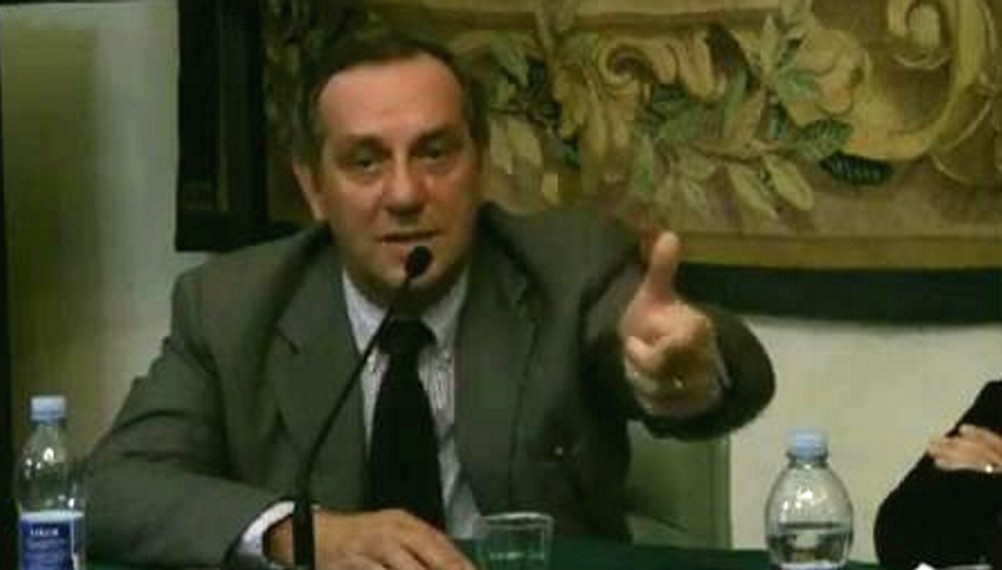
Above: the formidable senior appeal judge Dr Alessandro Nencini who will preside over the appeal.]
September 30; October 4, 23, 24; and November 6, 7, 25, and 26.
These are the dates the Florence appeal court will meet. Corriere and other Italian media sites are confirming these as the dates.
It is confirmed that Judge Alessandro Nencini will preside over the appeal in the Palace of Justice’s Courtroom 32. He is a very senior judge. As the ANSA News Service mentions, Judge Nencini is the President of the Second Chamber of Appeal of the Florence Court.
The new Prosecutor General of Tuscany (Florence’s region) Dr Tindari Baglione, the chief prosecutor of Tuscany’s appeal court, is selecting the prosecutors for the appeal. He arrived in Florence in May of this year. He is said to be formidably unbending. He recently imposed tough sentences on 27 people for the environmental damage caused by illegal work in Mugello on the high speed rail link between Florence and Bologna.
Already appointed as the lead prosecutor is Dr Alessandro Crini. He was among the Florence prosecutors who handled the investigation into the murders by the Monster of Florence and also the mafia massacres of 1993. In the Monster of Florence case he was a deputy to the leading prosecutor Dr Paolo Canessa, the main prosecutor of the last and final MoF trials.
There are at least seven pieces of bad news for the hotheaded among the Knox-Sollecito faction coming down the pike, some already mentioned in this recent post here..
- 1) Prosecutors Paolo Canessa and Alessandro Crimi carried out their MoF investigations in cooperation with Prosecutor Giuliano Mignini of Perugia. We believe it was they who first involved Dr Mignini in the MoF case by explaining the possible MoF connection with the Narducci murder Dr Mignini was investigating. Dr Mignini has no role in this appeal, but they had obvious confidence in him..
2) Giulia Bongiorno may be leaving the Sollecito team. Sollecito himself has done an immense amount to embarrass her with his defamatory book and narcissistic TV claims. The new lawyer Dr Mastro is said to be a relative of the Sollecito family and has been harshly critical of the Bongiorno defense line of joining Sollecito to Knox at the hip. He would presumably separate Sollecito from Knox, and may throw Knox to the wolves if it helps.
3) The trial of Luciano Aviello will be running in Florence during the same time as the appeal. Each could explosively impact the other. We explained the extraordinary implications of this trial for the Knox and Sollecito entourages in this past post also linked to just above.
4) The trial of Frank Sforza for criminal defamation will start in Florence on 6 November. A prosecutor will bring this case, it is not a simple calunnia case brought by those Sforza abused. We have a new post pending which will explain the many nasty implications for the FOA. Its testimony could also spill over into the Knox-Sollecito appeal.
5) The appeal outcome is expected to be arrived at by the latest in December. Knox and Sollecito wont have to wait long to hear the probable outcome: guilty as charged. Whether either will appear in the court seems doubtful, but a no-show will do them no good. A coward’s move.
6) The chief prosecutor in Florence is expected to announce any time now what charges will be brought against Raffaelle Sollecito and his publishers for the many false accusation of crimes and malicious mis-statements of evidence he foolishly included in his book. At least one could incur a substantial prison sentence: Sollecito’s false accusation that the prosecution sought a deal whereby he would turn on Amanda Knox in exchange for lesser charges.
7) The chief prosecutor in Bergamo north of Milan is expected to announce any time now what charges will be brought against Amanda Knox and her publishers and Oggi for the many false accusation of crimes and malicious mis-statements of evidence she foolishly included in her book. At least one all by itself could incur a prison sentence: Knox’s false accusation that the prosecution forced her in an illegal interrogation into framing Patrick Lumumba.
Those who appear to us realistic about the minefield they face include the defense lawyers (who are rumored to be very despondent) and those who have detached themselves from the pro-Knox forces and quite possibly Curt Knox himself who of late has been quiet for sure.
Those who still maintain a crazed and abusive hard line appear to be only Bruce Fischer and the Mellas family including Chris, Edda, and close relatives. Fischer seems to us unlikely to grow a brain before he is dragged to court, but it is possible that the Mellas family might. They have taken down all traces of one of the many defaming websites Chris Mellas is known to have put up, the final Perugia Shock.
Also when he overstayed his welcome at their house they threw Frank Sforza out.
[Central Florence at night with Palace Of Justice faintly visible behind at left-center; click to enlarge]


